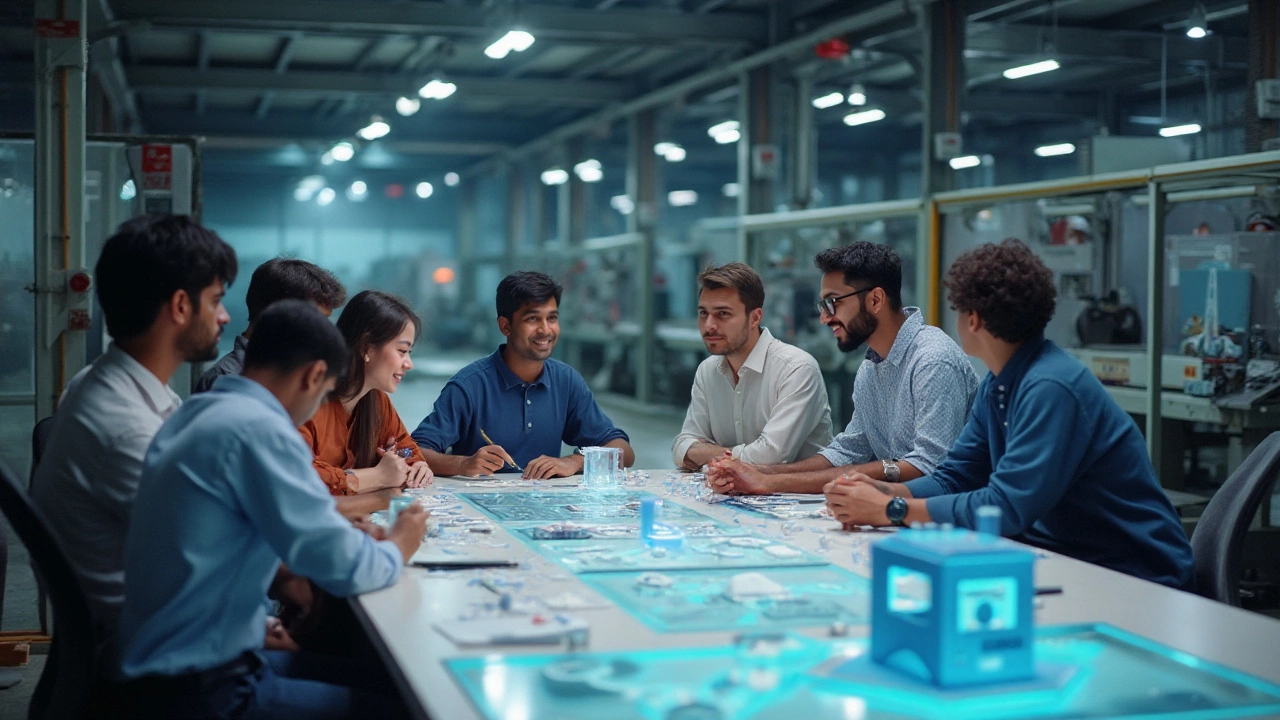- Most Profitable Small Scale Manufacturing Business Ideas Apr 6, 2025
- Steel Production: Which US City Takes the Crown? Jun 12, 2025
- Discovering the Priciest Wood for Indian Furniture Feb 3, 2025
- Best Furniture Companies in India for Quality, Style, and Value Nov 6, 2025
- Understanding Unit Processes in Food Processing Mar 31, 2025
Manufacturing Trends: What’s Shaping the Industry in 2025
If you work in factories, supply chains, or product design, you’ve probably heard the buzz around new manufacturing trends. From robots that learn on the job to greener factories that cut waste, these changes aren’t hype – they’re already reshaping how we build things. Let’s break down the biggest shifts and why they matter to you right now.
Key Drivers Behind Today’s Manufacturing Trends
First up, digital tech is the engine. AI‑powered quality checks, real‑time data dashboards, and digital twins let managers spot problems before they happen. That means less downtime and more consistent output. At the same time, additive manufacturing (3D printing) is moving from prototypes to small‑batch production, especially for complex parts that used to need expensive tooling.
Second, sustainability is no longer a nice‑to‑have. Companies are tracking energy use, water consumption, and waste in the same way they track profit. Policies like India’s push for green steel and low‑carbon plastics are forcing plants to adopt renewable power and recycling loops. The payoff? Lower operating costs and a stronger brand image.
Third, supply‑chain resilience is front‑and‑center after recent disruptions. Shorter, localized supply networks, automated inventory systems, and real‑time logistics tracking are becoming standard. This reduces the risk of a single bottleneck shutting down an entire line.
How You Can Leverage These Trends Right Now
Start small. Pick one process – maybe quality inspection – and pilot an AI‑based vision system. Most vendors offer a trial period, and the data you collect will show quick ROI. For sustainability, audit your energy bill and look for the biggest waste points; simple upgrades like LED lighting or waste heat recovery can cut costs fast.
If you’re in a small‑scale operation, consider joining a cluster of nearby manufacturers. Shared logistics, bulk raw‑material buying, and joint training programs can give you the scale needed to adopt new tech without a huge upfront spend.
Finally, keep an eye on policy changes. Initiatives like the Production‑Linked Incentive (PLI) scheme in India provide financial support for high‑tech manufacturing. Aligning your roadmap with these incentives can unlock funding that makes big projects affordable.Bottom line: the manufacturing landscape is moving fast, but you don’t need to overhaul everything at once. Target the biggest pain points, test new tools, and scale up as the benefits become clear. Stay curious, act on data, and the latest trends will work for you, not against you.
Top Manufacturing Startup Ideas Thriving in 2024
- Aarav Sekhar
- Dec 31, 2024
As of 2024, the manufacturing industry is witnessing a significant transformation, with startups playing a crucial role in this evolution. From the integration of advanced technologies to the rise of eco-friendly operations, new ventures are seizing unique opportunities. These changes offer an exciting landscape for entrepreneurs aiming to innovate and disrupt traditional manufacturing processes. This article explores the thriving sectors within the industry, offering insights and tips for aspiring startup founders.
